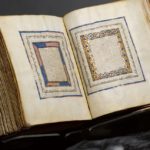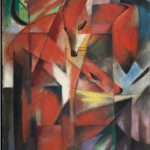
New York City.- The Whitney Museum of American Art is proud to present “Real/Surreal” on view at the museum from October 6th through February 12th 2012. The permeable boundary between the real and the imagined is the subject of this exhibition, which takes a close look at the interconnection between two of the strongest currents in twentieth-century American art, the exhibition includes eighty paintings, drawings, photographs, and prints made in the years before, during, and immediately after the Second World War by such artists as Paul Cadmus, Federico Castellón, Ralston Crawford, Mabel Dwight, Jared French, Louis Guglielmi, Edward Hopper, Man Ray, Kay Sage, George Tooker, Grant Wood, and Andrew Wyeth.
 An international movement in art and literature, Surrealism originated in Europe in the 1920s. Its practitioners tapped the subconscious mind to create fantastic, non-rational worlds. While some explored abstraction and used the subconscious to directly influence the formal structure of their work, others developed imagery with strong roots in traditional painting. This vein of Surrealism flourished most famously in the work of Salvador Dalí and René Magritte, and influenced a host of artists in the United States. As the movement spread internationally and some of the major figures moved to this country in the upheavals of the War, its ideas became more diffuse and permeated both art and popular culture. This exhibition, the second in a series of shows reexamining the Museum’s collection chronologically from its earliest days to the present, focuses on the tension and overlap between realism and Surrealism. Although the term “realism” has many facets, a basic connection to the observable world underlies all of them; the subversion of reality through the imagination and the subconscious lies at the heart of Surrealism. Surrealism was a liberating force which allowed for all manner of fantastic, unreal imagery, but it also greatly influenced how artists perceived and represented reality. Those who absorbed its ideas learned to invest objects and spaces with symbolic power, making them representative of psychic states, moods, and subconscious impulses. They favored narrative ambiguity over explicitness, intentionally allowing viewers to project their own subjectivity onto the work, so that the viewer’s imagination, and the artist’s, could intertwine. Yet there are convergences in these different and even oppositional approaches to experience, and they encourage new ways of looking at the art of the twenties, thirties, and forties in America. For example, Edward Hopper, the artist most closely identified with the Whitney, is a painter whose own subjectivity and imagination are integral to his work.
An international movement in art and literature, Surrealism originated in Europe in the 1920s. Its practitioners tapped the subconscious mind to create fantastic, non-rational worlds. While some explored abstraction and used the subconscious to directly influence the formal structure of their work, others developed imagery with strong roots in traditional painting. This vein of Surrealism flourished most famously in the work of Salvador Dalí and René Magritte, and influenced a host of artists in the United States. As the movement spread internationally and some of the major figures moved to this country in the upheavals of the War, its ideas became more diffuse and permeated both art and popular culture. This exhibition, the second in a series of shows reexamining the Museum’s collection chronologically from its earliest days to the present, focuses on the tension and overlap between realism and Surrealism. Although the term “realism” has many facets, a basic connection to the observable world underlies all of them; the subversion of reality through the imagination and the subconscious lies at the heart of Surrealism. Surrealism was a liberating force which allowed for all manner of fantastic, unreal imagery, but it also greatly influenced how artists perceived and represented reality. Those who absorbed its ideas learned to invest objects and spaces with symbolic power, making them representative of psychic states, moods, and subconscious impulses. They favored narrative ambiguity over explicitness, intentionally allowing viewers to project their own subjectivity onto the work, so that the viewer’s imagination, and the artist’s, could intertwine. Yet there are convergences in these different and even oppositional approaches to experience, and they encourage new ways of looking at the art of the twenties, thirties, and forties in America. For example, Edward Hopper, the artist most closely identified with the Whitney, is a painter whose own subjectivity and imagination are integral to his work.
Many artists who developed imagery based on new and very specific, concrete conditions of industrial America were essentially interested in artificial worlds and presented these as distillations of reality. Eventotally abstract painters such as Yves Tanguy depended on techniques developed from traditional realist art to render other worlds. By willfully distorting such techniques, Helen Lundeberg and Mabel Dwight could quietly undercut our sense of stability, while showing us recognizable and even mundane objects and settings. Most of the artists on view were academically trained and had a full command of traditional painting and drawing techniques. Those directly connected to European Surrealism or strongly influenced by it used these techniques to subvert and alter the observable world. Harder to categorize are those whose work has certain qualities in common with Surrealism but who tinkered subtly with reality rather than dramatically changing it to expressive ends. Like the Surrealists, their strategies make the familiar unfamiliar, unsettling, or uncanny, and often involve manipulating the tools of representational art. Some, for example, distort spatial perspective by compressing or exaggerating it. They may crop or fragment what they depict, create strange juxtapositions of objects, or unusual shifts in scale; they may distill or accentuate normal qualities in their surroundings—light, shadow, materials, textures—so that these appear abnormal or weird.

As the preeminent institution devoted to the art of the United States, the Whitney Museum of American Art presents the full range of twentieth-century and contemporary American art, with a special focus on works by living artists. The Whitney is dedicated to collecting, preserving, interpreting, and exhibiting American art, and its collection—arguably the finest holding of twentieth-century American art in the world—is the Museum’s key resource. The Museum’s signature exhibition, the Biennial, is the country’s leading survey of the most recent developments in American art. Innovation has been a hallmark of the Whitney since its beginnings. It was the first museum dedicated to the work of living American artists and the first New York museum to present a major exhibition of a video artist (Nam June Paik in 1982). Such figures as Jasper Johns, Cy Twombly, and Cindy Sherman were given their first museum retrospectives by the Whitney. The Museum has consistently purchased works within the year they were created, often well before the artists became broadly recognized. The Whitney was the first museum to take its exhibitions and programming beyond its walls by establishing corporate-funded branch facilities, and the first museum to undertake a program of collection-sharing (with the San Jose Museum of Art) in order to increase access to its renowned collection. The Whitney’s collection— comprising more than 19,000 paintings, sculptures, drawings, prints, photographs, films, videos, and new media by more than 2,900 artists—contains some of the most significant and exciting work created by artists in the United States during the twentieth and twenty-first centuries. Visit the museum’s website at … http://whitney.org







